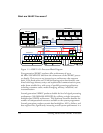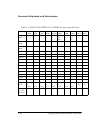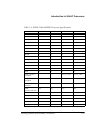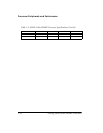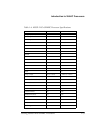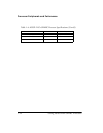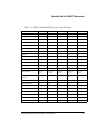
Processor Peripherals and Performance
1-8 Getting Started With SHARC Processors
Integration of peripherals continue with serial ports, SPI ports, S/PDIF
Tx/Rx, and an 8-channel asynchronous sample rate converter block. The
fourth generation SHARC allows data from the serial ports to be directly
transferred to external memory by the DMA controller, again preserving
internal memory space for code and data. The fourth generation processor
also incorporates link ports that allow processor-to-processor communica-
tion for data movement. Some fourth generation SHARC processors also
integrate real-time clock (RTC) and watchdog timer functionality. In
addition, a number of fourth generation processors are also pin compati-
ble for use with a single hardware platform.
Each SHARC processor provides unique capabilities, while being code
compatible with previous generations of SHARC devices, so legacy code is
easily ported to the newer products. Table 1-1, Table 1-2, Table 1-3,
Table 1-4, and Table 1-5 list key SHARC processor specifications.
For
more information, view the SHARC processor selection table online at the
Analog Devices Web site at:
http://www.analog.com/sharc
Processor Peripherals and Performance
SHARC processors represent a class of devices that combine an extremely
capable single-instruction, multiple-data (SIMD) processor engine with
features like core timers, general-purpose timers, UARTs, and SPI ports.
In addition to advanced peripherals, SHARC processors use a software
programmable, on-chip phase lock loop (PLL) that allows software control
during runtime of core and peripheral clock of the SHARC processors.
Performance
Real-time signal processing tasks are I/O and computationally intensive.
In addition to high speed math units and single cycle instruction









